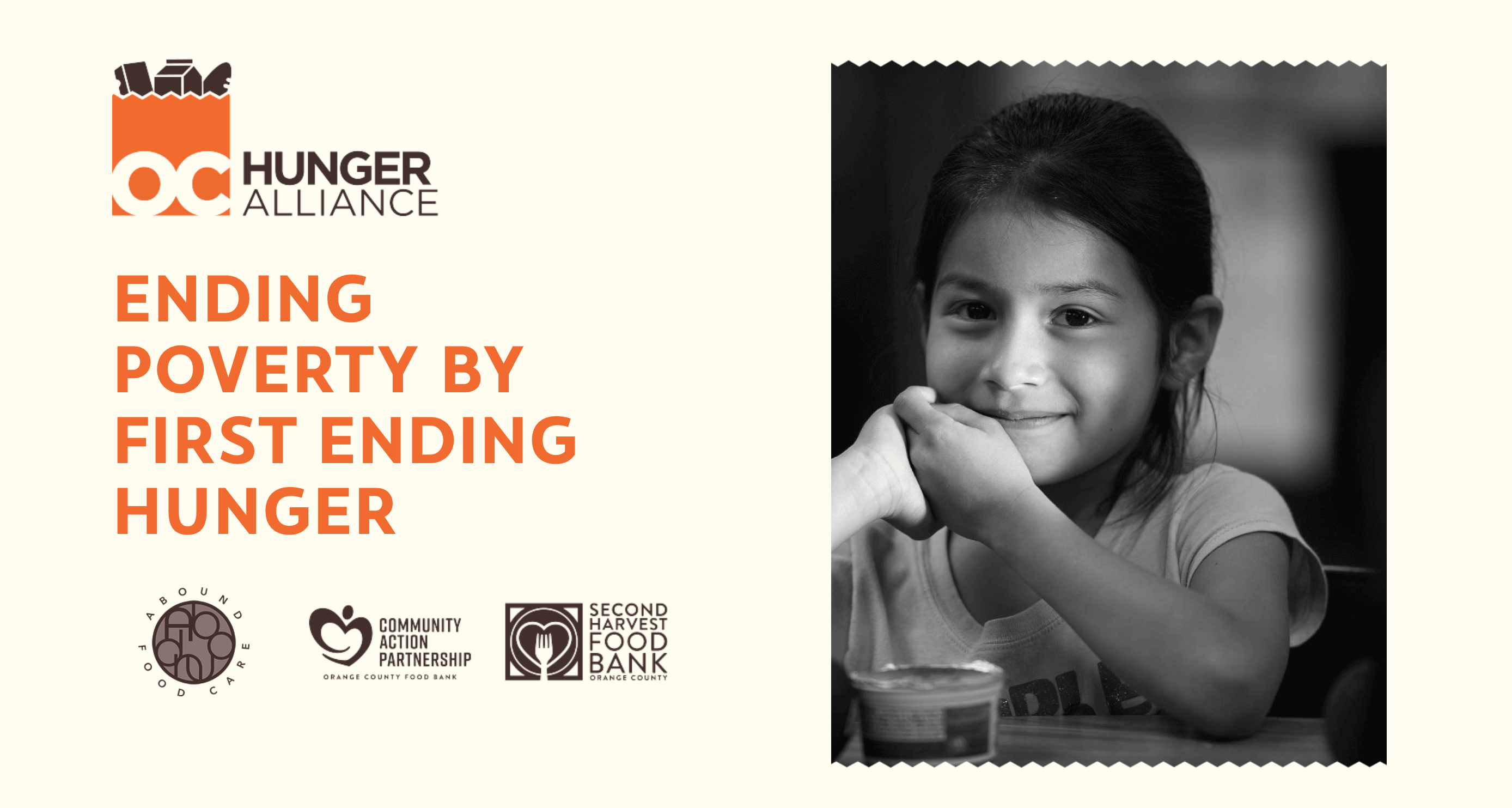Better together. It’s a phrase the three leaders of the Orange County Hunger Alliance like to use. Not just a description, it’s their operating principle.
The Alliance unites Orange County, California’s three leading hunger relief organizations — Second Harvest Food Bank of Orange County; Orange County Food Bank, and Abound Food Care – into a partnership aimed at eliminating the silos that had prevented them from more effectively fighting hunger and poverty.

The collaboration of a Feeding America food bank, a food bank outside of the Feeding America network, and a food rescuer is not very common in hunger relief. For the most part, food banks tend to address food insecurity within a specific geography through a top-down approach – they divide up the territory and work with local pantries within their areas to address the need.
The Orange County Hunger Alliance, launched in October 2020, pushes against such siloed approaches, seeking to answer the question: “Where is it that we can be impactful by acting differently?” said Mark Lowry, Director of Orange County Food Bank.
Appropriately, the Alliance began over a meal. Several years ago, Harald Herrmann, then-CEO of Second Harvest Food Bank, asked his team for a map of Orange County’s food pantries. The map he received showed only those food pantries that Second Harvest served.
Frustrated at seeing only half the picture, he contacted Lowry. Over breakfast, the two agreed that the organizations’ cordial, professional relationship wasn’t enough, and committed to exploring how they might work more closely together. Not long after, they included Mike Learakos, CEO of Abound Food Care, a nationally focused nonprofit dedicated to optimizing the supply chain to end hunger and reduce food waste.

The Alliance currently has three main areas of focus: increasing efficiencies in Orange County’s emergency food system, such as through shared purchasing and shared funding opportunities; expanding participation in federal nutrition programs, and advocacy. While it operates as an informal collaboration, the members will be entering a Memorandum of Understanding outlining their shared purpose, values and goals, which Claudia Bonilla Keller, Second Harvest’s current CEO, described as a “modest step.”
While the Alliance has only three members, they “touch base with every [Orange County] stakeholder working in food insecurity and food waste reduction,” Learakos noted. Equally important, “Within a small group, we could be honest with each other. We could challenge each other.” This, he added, has “allowed us to have a greater impact beyond our own capabilities.”
Their approach is paying off. “Our local, our state, our county, our federal representatives hear from us together,” Keller said. When Orange County awarded the Alliance’s members $11 million during the pandemic, county supervisors credited their “united front,” she noted. Likewise, regular Alliance engagement with Orange County’s Social Services Agency has led CalOptima, which administers Medi-Cal in Orange County, to fund a campaign this past March to enroll 100,000 of its members who are eligible for but not currently enrolled in CalFresh, California’s SNAP program.

The Orange County Alliance is not a total anomaly. One like-minded approach can be found in New York City, where a group of pantries has found savings through group purchasing. For other organizations considering similar approaches, the Alliance members are aligned in their advice.
“Redefine success,” Learakos said. “In order to do that, you’ve got to be able to collaborate.” Keller added, “If you’re going to form an alliance like this, you have to really look to another organization and very practically recognize their strengths and what you can learn from them.”
“Recognizing that we are better together,” Lowry emphasized. “We didn’t always agree the first time an issue was raised, but we valued enough the partnership and our overarching goal – what we saw as the art of possible – that we were willing to talk through all these issues and come to a consensus.” – Amanda Jaffe
Amanda Jaffe is a writer and former attorney with a deep interest in the organizations and mechanisms that address food insecurity. Her writing has appeared in The American Interest, PASSAGE Magazine, and the Finder, among other publications.
Like what you’re reading?
Support Food Bank News
This article was made possible by the readers who support Food Bank News, an editorially independent nonprofit media organization. Food Bank News is not funded by any government agencies, nor is it part of a larger association or corporation. Your support helps ensure our continued solutions-oriented coverage of best practices in hunger relief. Thank you!
Connect with Us:










